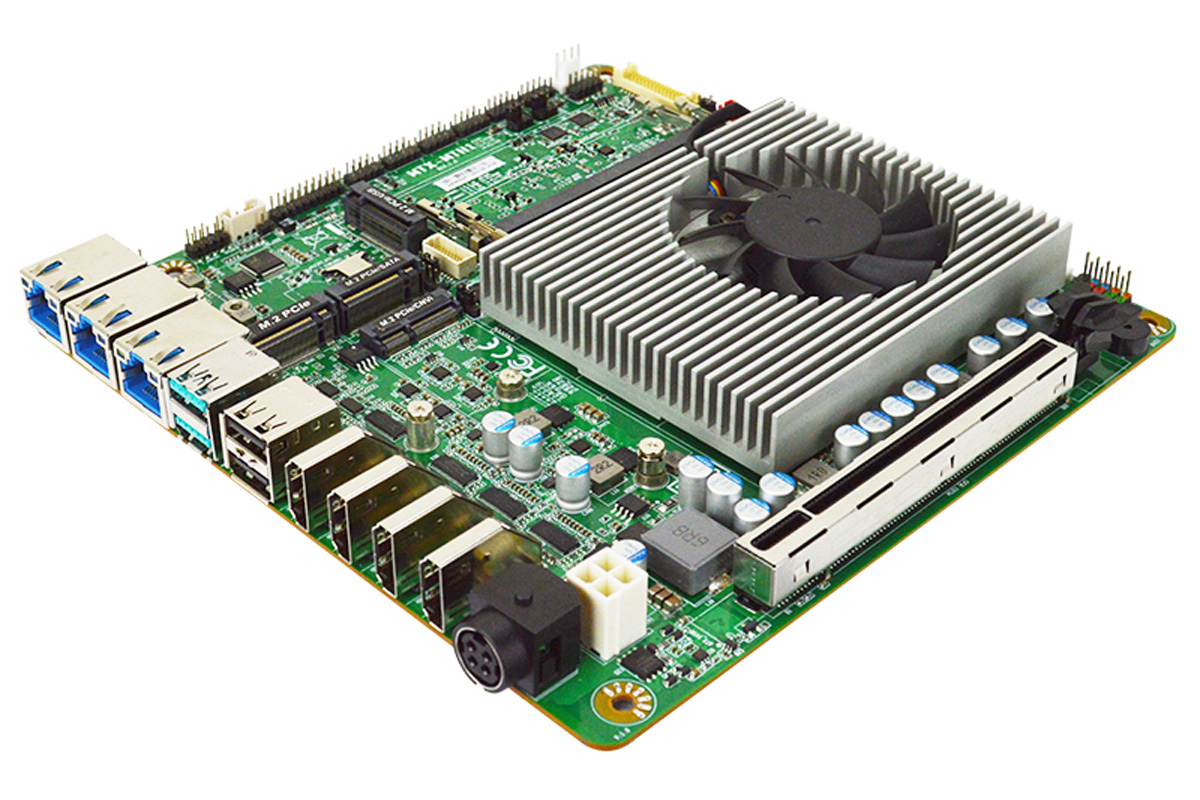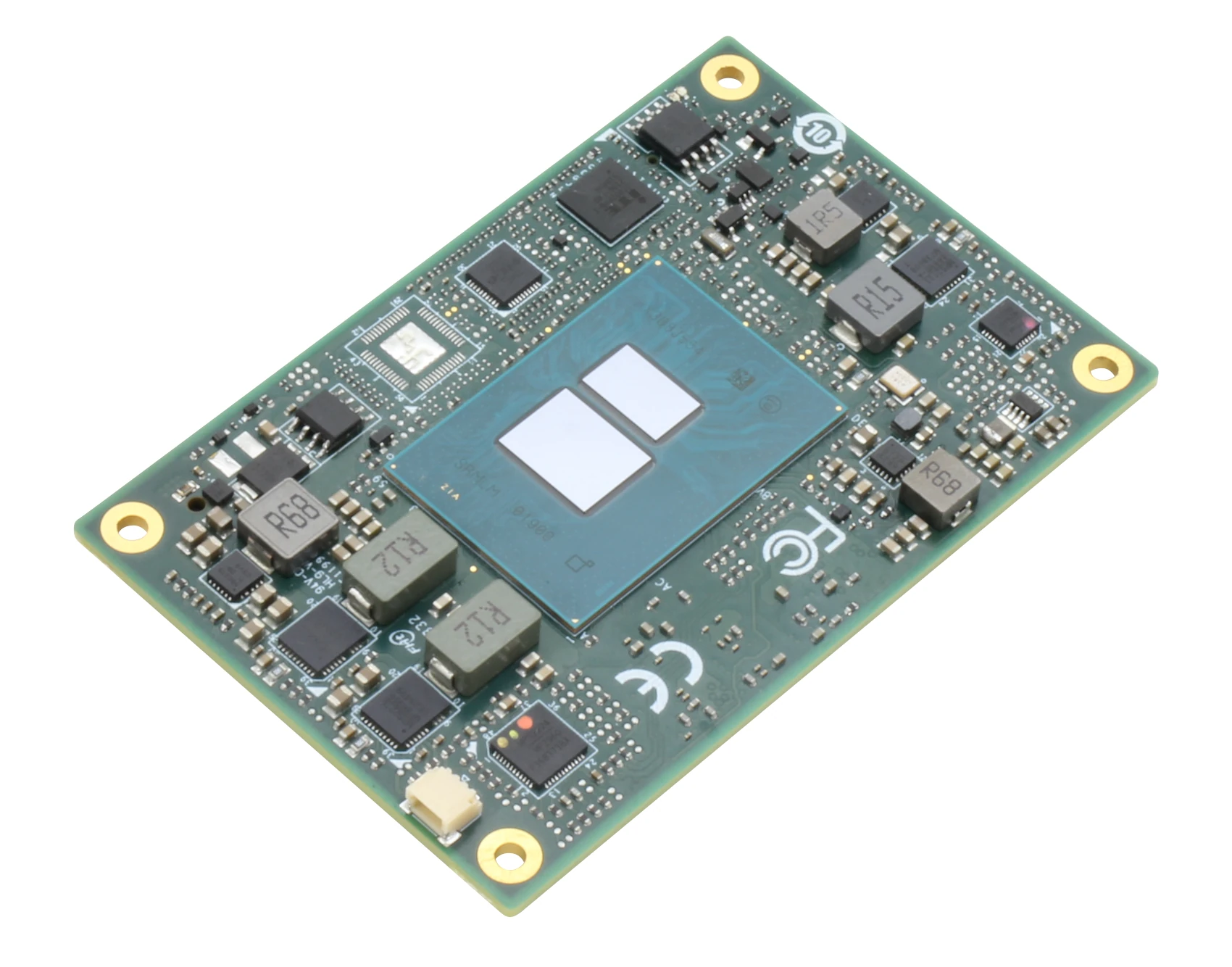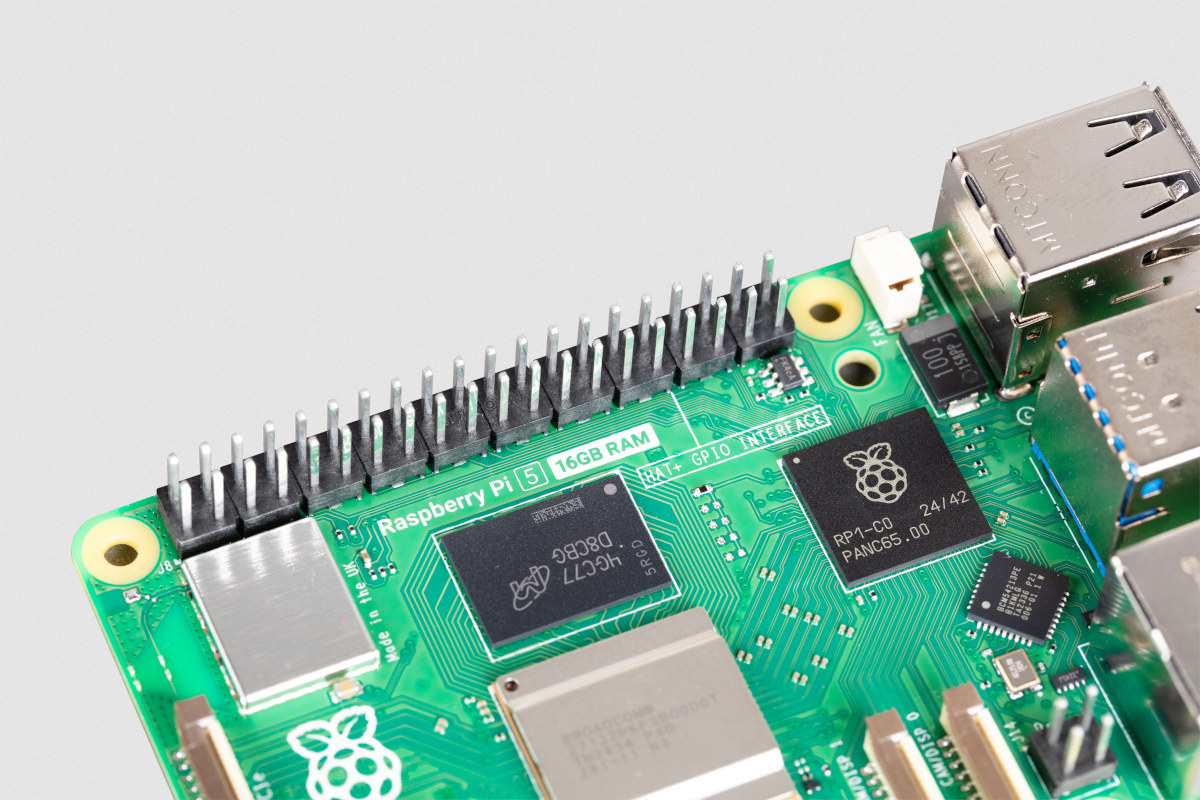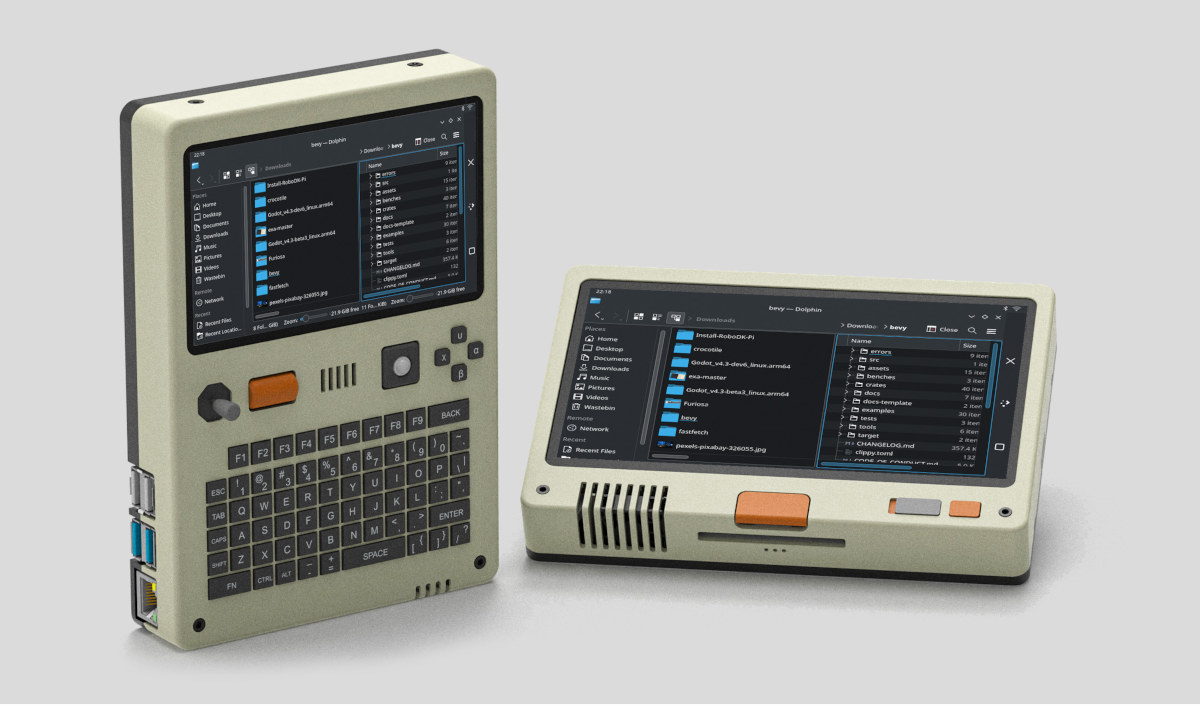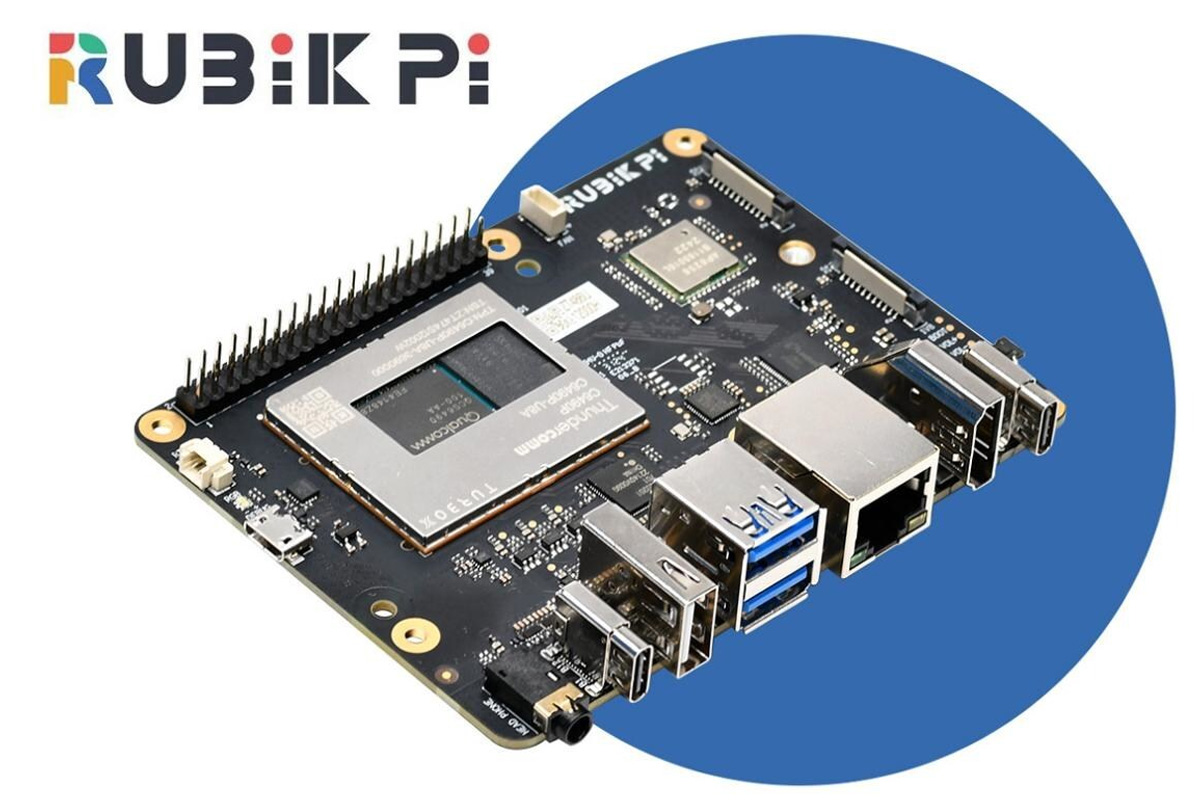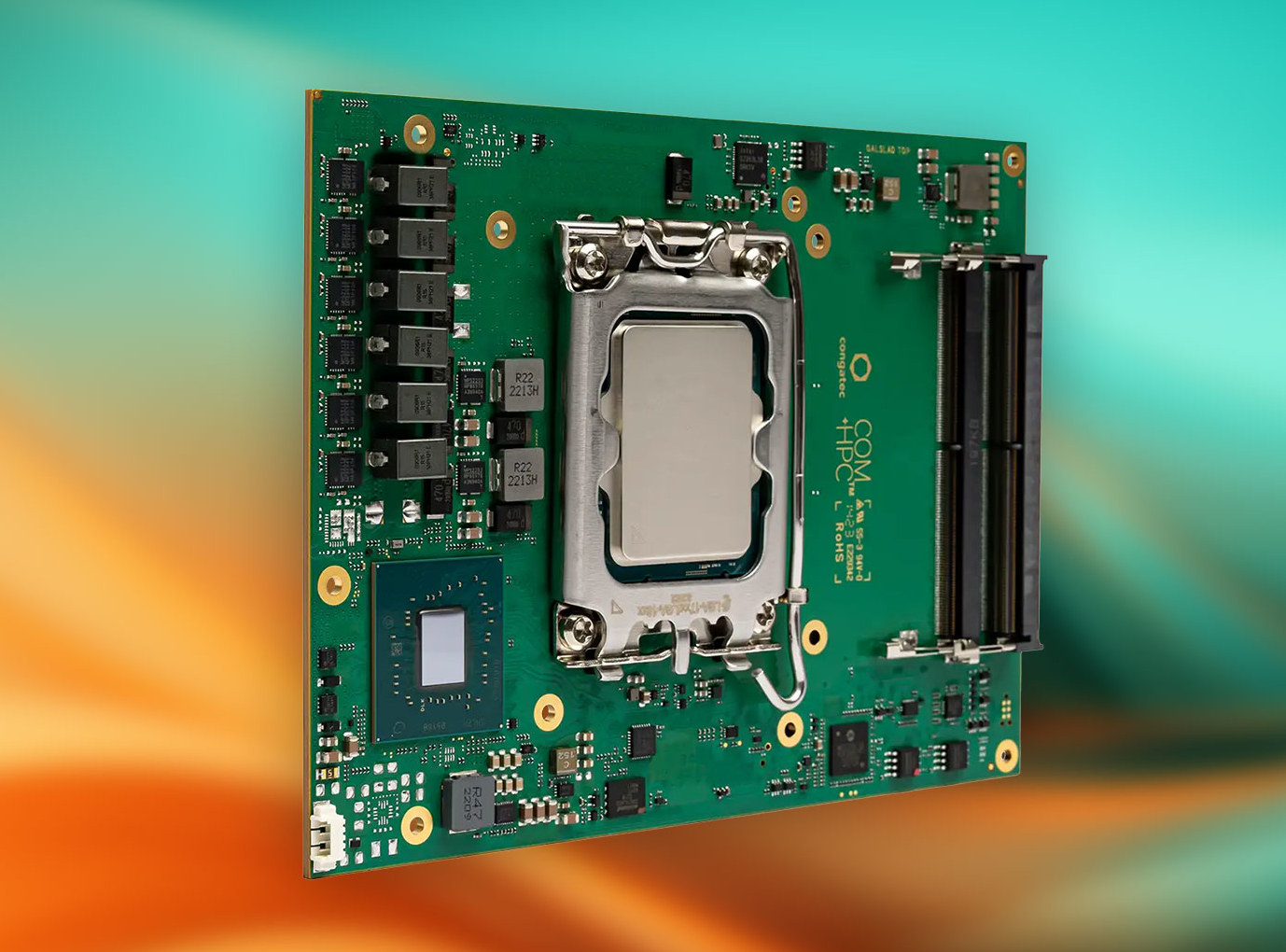Jetway MTX-MTH1 is a thin industrial Mini-ITX SBC built around Intel Core Ultra 5/7 Meteor Lake processors with Intel Arc Graphics and support for up to 96GB of DDR5 memory. The most interesting features of this compact board are the three 2.5GbE jacks and four HDMI 2.1 video outputs for 4K and 8K displays. Additionally, it features multiple USB ports, a PCIe Gen 5 x8 slot, M.2 slots for storage and 4G LTE/5G, serial ports, and GPIO interfaces. With industrial environmental tolerance (-20°C to 60°C) this thin Mini-ITX motherboard is ideal for industrial automation, AI processing, edge computing, and embedded systems. Jetway MTX-MTH1 specifications: SoC (one or the other) Intel Core Ultra 7 Processor 155H (Meteor Lake, TDP 28W) with Intel Arc Graphics Intel Core Ultra 5 Processor 125H (Meteor Lake, TDP 28W) with Intel Arc Graphics System Memory – 2x DDR5 5600MHz SO-DIMM, up to 96GB Storage SATA III […]
NanoCOM-ADN – A COM Express Type 10 Module based on Intel Alder Lake-N SoC
AAEON NanoCOM-ADN is a compact (84 x 55mm) COM Express Type 10 module based on Intel Alder Lake-N SoCs, namely Processor N50/N97, Atom x7425E, or Core i3-N305 that adds another option to the SMARC, Qseven, and COM Express Type 6 modules offered by the company with the same processors. The NanoCOM-ADN computer-on-module features up to 16GB LPDDR5x soldered-on memory, up to 64GB eMMC flash, and two Intel i226-V 2.5GbE controllers. Its standard 220-pin COM Express board-to-board connector exposes two SATA interfaces, four PCIe Gen3 x1 interfaces, DDI and LVDS video outputs, eight USB interfaces, and more. AAEON explains the Alder Lale-N COM Express Type 10 CPU module is especially suited to digital signage, healthcare imaging, machine vision, industrial, robotics, and edge computing applications. AAEON NanoCOM-ADN specifications: Alder Lake N-series SoC (one or the other) Intel Atom x7425E quad-core processor up to 3.4 GHz with 6MB cache, 24EU Intel UHD […]
Raspberry Pi 5 edge AI computer ships with 8GB RAM, Hailo-8 AI module, supports Frigate NVR
Seeed Studio’s reComputer AI R2130-12 is an Edge AI computer with a Raspberry Pi 5 SBC with 8GB RAM and a Hailo-8 module with 26 TOPS of AI performance, suitable for video analytics, machine vision, and intelligent edge computing. The computer comes with a HAT+ with two M.2 sockets, one occupied by the Hailo-8 AI accelerator and the other available for an M.2 NVMe SSD. In some ways, it’s just a nicely packaged Raspberry Pi 5 SBC with Hailo-8 AI accelerator that we reviewed last year. reComputer AI R2130-12 specifications: SBC – Raspberry Pi 5 with 8GB RAM AI Processor – Hailo-8 M.2 AI accelerator module with 26 TOPS Storage microSD card slot, with support for high-speed SDR104 mode Optional M.2 NVMe SSD via M.2 PCIe 3.0 slot Video Output – 2x micro HDMI ports up to 4Kp60 Camera/Display I/F – 2x 4-lane MIPI camera/display transceivers Networking Gigabit Ethernet RJ45 […]
Raspberry Pi 5 with 16GB RAM launched for $120
Considering the Raspberry Pi CM5 is available with up to 16GB RAM, it should come as no surprise that the Raspberry Pi 5 also got its own 16GB LPDDR4 RAM upgrade. But the extra memory does come at a premium since the new board sells for $120, a $40 markup compared to the Raspberry Pi 5 with 8GB RAM. The extra memory should bring the user experience closer to a desktop machine for browsing the web with multiple tabs, checking emails, watching YouTube videos, and more all at the same time. Besides multitasking, the 16GB RAM may also be beneficial when running generative AI workloads like LLMs and VLMs which are known to be memory-hungry. Raspberry Pi 5 16GB specifications: SoC – Broadcom BCM2712 “D0” stepping CPU – Quad-core Arm Cortex-A76 processor @ 2.4 GHz with crypto extensions, 512KB per-core L2 caches, 2MB shared L3 cache GPU – VideoCore VII […]
Pilet is a Raspberry Pi 5-powered modular, portable computer with 5-inch or 7-inch display, optional built-in keyboard (Crowdfunding)
Pilet is a modular, open-source hardware, portable computer designed for the Raspberry Pi 5 SBC, and equipped with a choice of displays, keyboards, and an optional battery module that can last for up to 7 hours. Two models are available: the Pilet 5 with a 5-inch display, an integrated keyboard, a trackball, a scroll wheel, a navigational switch (D-Pad), and game buttons, and the Pilet 7 with a larger 7-inch display and support for detachable modules such as a keyboard, gamepad, or deck. Pilet specifications: Supported SBC – Raspberry Pi 5 Storage – MicroSD card, NVMe SSD via module Display Pilet 5 – 5-inch IPS MIPI DSI display with 1280×800 resolution, capacitive touch screen. Pilet 7 – 7-inch IPS MIPI DSI display with 1280×800 resolution, capacitive touch screen. Video Output- 2x micro HDMI ports Networking Gigabit Ethernet RJ45 port 802.11ac WiFi 5 and Bluetooth 5.0 Optional LTE cellular via module […]
Qualcomm QCS6490-based Rubik Pi 3 AI SBC supports Android, Linux, and LU operating systems
Thundercomm has officially launched the Rubik Pi 3 SBC built around the Qualcomm QCS6490 SoC with a 12.5 TOPS AI accelerator. The SBC comes in a “PI-CO ITX” form factor that combines the Pico-ITX standard and the 40-pin GPIO header found on Raspberry Pi SBCs. The SBC comes with a standard set of interfaces, including USB, HDMI out, MIPI-CSI camera support, Ethernet, Wi-Fi 5, Bluetooth 5.2, and much more. Additionally, the SBC features a 40-pin header for GPIO, UART for debugging, audio output, and RTC battery support. The company mentions that it is the first Pi-based system using Qualcomm’s AI platforms, hence it supports Raspberry Pi HAT/HAT+ expansion boards, making it suitable for various AI, IoT, and edge computing projects. Rubik Pi 3 SBC specifications: SoC – Qualcomm QCS6490 CPU – Octa-core Kryo 670 with 1x Gold Plus core (Cortex-A78) @ 2.7 GHz, 3x Gold cores (Cortex-A78) @ 2.4 GHz, 4x […]
conga-HPC/cBLS COM-HPC Client Size C Computer-on-Module features Intel Core Bartlett Lake S processor (series 2)
Congatec conga-HPC/cBLS is a family of COM-HPC Computer-on-Modules (COMs) powered by Intel Core Bartlett Lake S processors and designed for edge and infrastructure applications such as medical imaging, test & measurement, communication & networking, retail, energy, banking, video surveillance (traffic monitoring) and optical inspection among others. The COM-HPC Client Size C (120×160 mm) modules feature up to an Intel Core 7 251E Bartlett Lake S processor with eight Performance cores and sixteen Efficient cores for a total of 32 threads, support up to 128GB DDR5 memory via four SO-DIMM sockets, and integrate two 2.5GbE controllers. Congatec conga-HPC/cBLS specifications: Bartlett Lake-S SoC Intel Core 3 201E quad-core processor with 4x P-cores clocked at 3.6 GHz / 4.8 GHz (Turbo), 12MB cache, 24 EU Intel UHD Graphics 770; PBP: 60W Intel Core 5 211E 10-core processor with 6x P-cores @ 2.7 GHz / 4.9 GHz (Turbo), 4x E-cores @ 2.0 GHz / […]
FOSDEM 2025 schedule – Embedded, Open Hardware, RISC-V, Edge AI, and more
FOSDEM 2025 will take place on February 1-2 with over 8000 developers meeting in Brussels to discuss open-source software & hardware projects. The free-to-attend (and participate) “Free and Open Source Software Developers’ European Meeting” grows every year, and in 2025 there will be 968 speakers, 930 events, and 74 tracks. Like every year since FOSDEM 2015 which had (only) 551 events, I’ll create a virtual schedule with sessions most relevant to the topics covered on CNX Software from the “Embedded, Mobile and Automotive” and “Open Hardware and CAD/CAM” devrooms, but also other devrooms including “RISC-V”, “FOSS Mobile Devices”, “Low-level AI Engineering and Hacking”, among others. FOSDEM 2025 Day 1 – Saturday 1 10:30 – 11:10 – RISC-V Hardware – Where are we? by Emil Renner Berthing I’ll talk about the current landscape of available RISC-V hardware powerful enough to run Linux and hopefully give a better overview of what to […]


